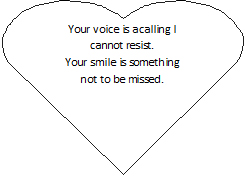Full time relationships with our partners and children challenge us to take conscious responsibility for our behaviour. This chart illustrates how we can support ourselves to move out of negative behaviour by stepping into a neutral activity. This can help us to disconnect from negative behaviour and create a pause in which to ascertain a further movement into positive interaction. Often when we are in negative behaviour we judge this so strongly that we are unable to effectively establish something positive. When we are responding from our survival and defensive mechanisms positive alternatives will feel unsafe and not will therefore be easy to attain. A much easier step is to acknowledge the negative survival defences and focus on moving into a neutral response which will feel safer and give the required pause, an easier breathing out space, in which it is safe to remain for as long as required. From the neutral space it is considerably easier to find a way of moving, in one’s own time, into a positive alternative.
Identify Quality of Personal Disposition and Monitor Responses
Disruptive behaviour can be directly and indirectly influenced by the energy and mood of others – those within the immediate physical environment and those that are sharing together socially in some form of exchange. However, it only takes one person in amongst a strong atmosphere of disharmony to give a child the choice of a safe, compassionate and supportive environment. Therefore it is how we engage our energy and our own disposition that is of utmost importance.
When over-endeavour consumes authenticity and disrupts our sense of being, then isolation can bring separation and associated withdrawal from co-operative interaction. Then we may drift away from the source of creative existence that nurtures love received in the giving. Like a fallen leaf, stiff and dry – the divinity within the soul-spirit fails to generate the sparks of joy required for authenticity. We, as adult carers, need to take responsibility for our own feelings before we can hope to encourage positive attitudes and subsequent behaviour in others, especially children, who are so influenced by the role models around them.
In order to do this we need not be perfect, but simply willing make honest observations about our own feelings, and then establish at least a neutral disposition, if a positive attitude cannot be established authentically.
The following chart describes different aspects of this process from a more practical perspective:-


